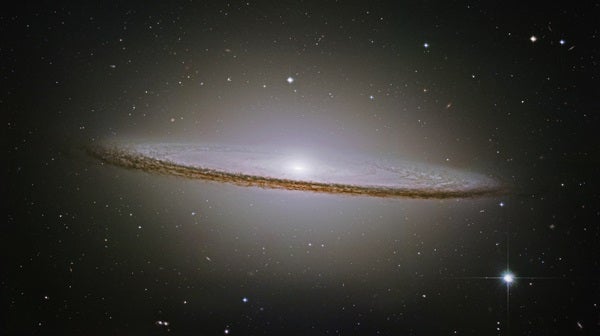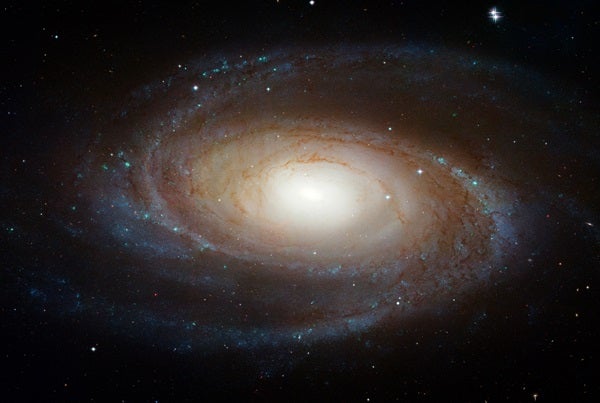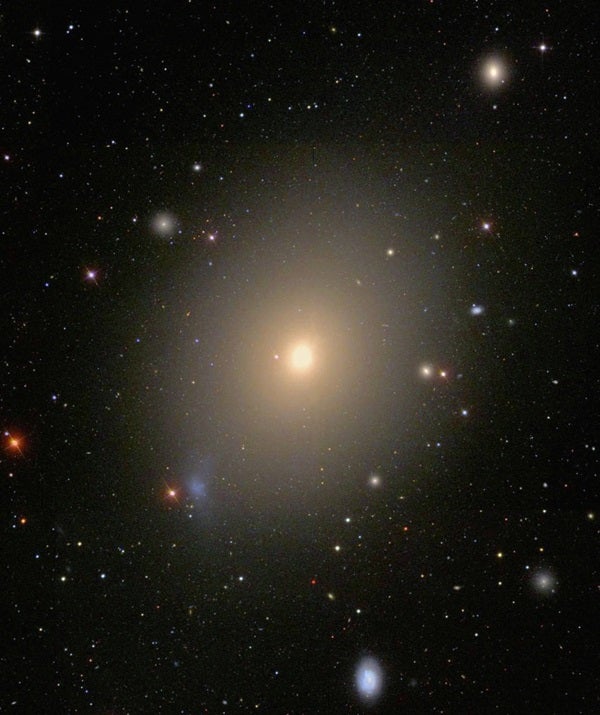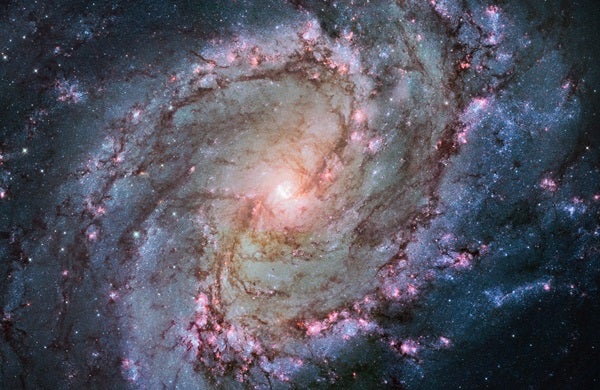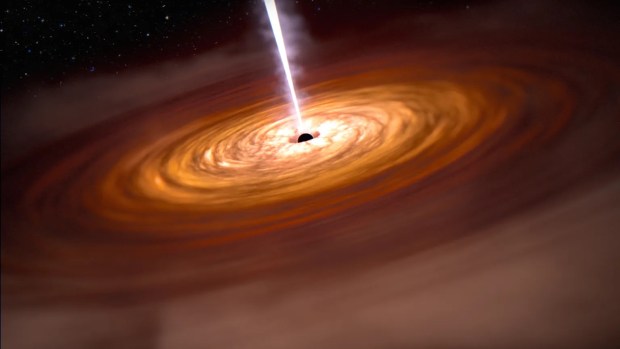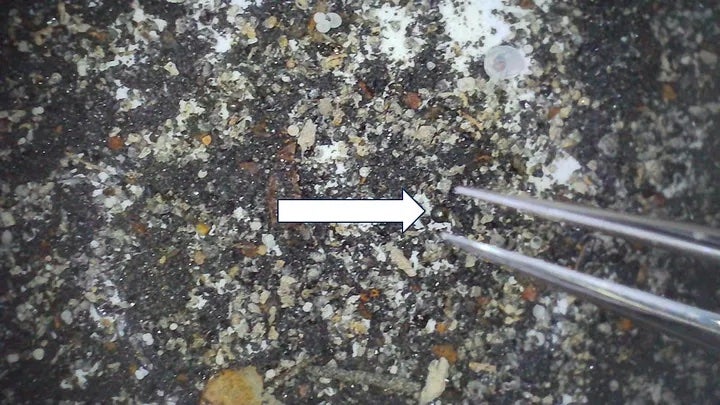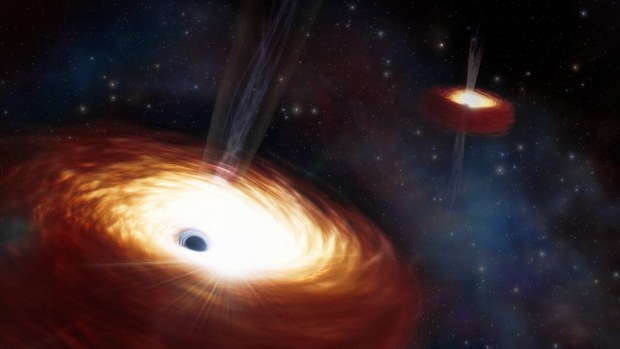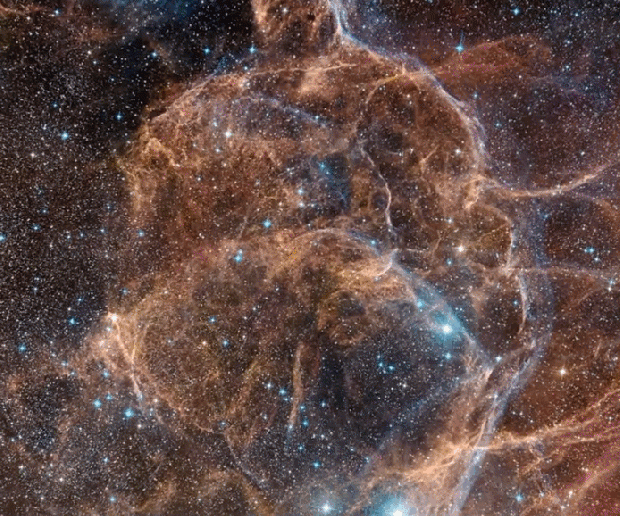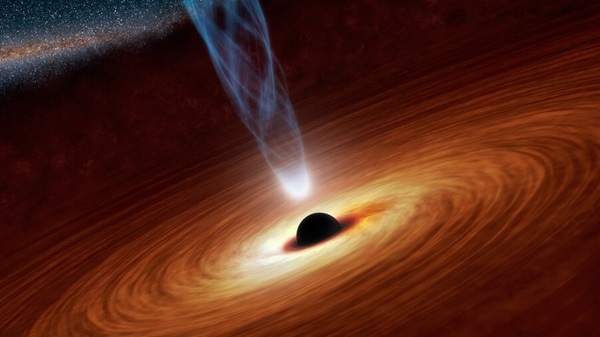To a large number of people today, the objects that elicit the same reaction are not muons, but black holes. Yet astronomers know the most massive stars die by exploding as supernovae, leaving behind a black hole with a mass of about three to 20 times the mass of our Sun. They also believe that a supermassive black hole with a mass between 1 million and 10 billion times the Sun’s mass lives at the center of most galaxies.
Who ordered this? Why do astronomers imagine such monsters — so massive and yet so small that not even light can escape their fatal gravity — lurk everywhere they look? Do astronomers just love drama? Are they attracted to the most extreme explanations that fertile imaginations can concoct?
The answer is no. It’s profoundly natural that many astronomical objects evolve into black holes. And this evolution — despite impressive and awe-inspiring ends — results from ideas that are quite basic.
All astronomical objects that are held together by gravity evolve similarly. Such self-gravitating systems include stars, clusters of stars, and galaxies, but not solid objects like asteroids or your body that are held together by electrostatic forces.
Self-gravitating systems evolve toward the tightest gravitationally bound state they can reach. They do this by growing a smaller, more massive core at the expense of a more diffuse outer halo. The details vary from system to system. But the common outcome is always that a small fraction of the mass ends up in a tiny and enormously dense central object. Planets, white dwarf stars, and neutron stars are examples of such end products that should not evolve further. But if the mass is big enough, nothing stops the compression at the stage of a white dwarf or neutron star. Gravity wins. That’s why black holes form in so many different circumstances.
Core collapse in globular star clusters
A great variety of astronomical objects evolve similarly. And even systems without black holes eventually form dense cores. Some of the clearest examples of this evolution are globular star clusters. They are the simplest systems that we can consider because they consist only of stars, and the stars interact only through gravity. They don’t collide. Every star is attracted to every other star by a force that gets stronger as 1 divided by the square of the separation of the two stars. When stars pass close to each other, the attraction between them gets much stronger, and they fling each other around, sometimes violently. But what happens next?
An analogy from our daily lives provides the answer. Imagine that we have a cluster of skaters on a funnel-shaped skating rink. Suppose that the ice is frictionless so a skater who orbits the central hole on a circular or elliptical orbit stays in that orbit with no change forever, provided that no other skater interferes. And the funnel shape means that skaters have to move faster nearer the center, just as Kepler’s laws dictate for planets moving around the Sun.
Let’s say the rink has few skaters, so they interact little if at all, and each one has an orbit almost independent of all the others. Different skaters travel in different directions at different speeds, faster near the center. Similarly, in a globular cluster, different stars live at different distances from the center and move in orbits that have random directions and almost random shapes compared with all other orbits.
Now consider what happens when stars — that is, skaters — pass close to each other. In the simplest case, all skaters have the same mass. When two skaters pass close enough to each other to join hands, suppose they swing each other around as long as their hands can touch. The result is that both skaters change directions, but their speeds don’t change much. After many such encounters, orbits get redistributed, but the system evolves very little.
But this rink is a faithful model of a cluster of stars held together by gravity. If a skater suddenly goes faster, she climbs farther from the center and may be thrown out of the system. Meanwhile, the skater who slowed down — the heavy one —falls toward the center. In doing so, she has to move faster.
Over many encounters, the evolution tends to make the heavy skaters sink to the center and the light skaters climb farther from the center. When this happens in a globular cluster, the process is called core collapse, and the separation of low- and high-mass stars is called mass segregation. Lots more mass now concentrates near the cluster center, so the stars there must move more quickly in their orbits.
Something similar happens even if all skaters have the same mass. When equal-mass skaters swing each other around, they rearrange their directions of motion but don’t change their speeds. But this is only approximate. Different skaters move at different speeds, so they don’t all have the same kinetic energy even if they all have the same mass. Encounters still tend to equalize kinetic energy between skaters. The faster one tends to slow down and fall toward the center while the slower one tends to speed up and climb outward. Core collapse still happens; it just happens more slowly.
Evolution of stars and star clusters
Now think of the evolution of our skaters or our cluster of stars, and add to it the flow of heat from hotter to colder places that we experience in our daily lives. Temperature is a measure of how fast the particles that make up an object jiggle around at the microscopic level. Faster jiggling corresponds to a higher temperature. In our cluster, the average speed can be related to a temperature. Objects near the center have to move faster to maintain their positions in the cluster or skating rink. That is, the temperature is higher closer to the center. When faster skaters swing slower skaters and speed them up, this corresponds to heat flowing from a hotter to a colder place. Just as heat flows from a hot glowing ember to colder air on Earth, heat in our cluster tends to flow outward. The result is that the cluster core gets denser and the outside expands.
But there is one major difference. As the core of the cluster grows denser, more mass lives near the center. So the gravitational attraction between objects gets stronger, and they have to move faster. This means our cluster has an important property that is opposite to its analog in our day-to-day lives. As heat flows away from the center, the center does not get colder. Instead, it gets hotter. This is not what happens to a glowing coal on Earth nor to your body if you swim in ice-cold water. But it is the fundamental way that orbits act. So any cluster that is held up by the random motions of its stars evolves in the sense that the core gets denser and hotter as
the outer parts expand.
Why do stars die the way they do?
Our understanding of how star clusters evolve translates directly to an understanding of how stars die. Although the detailed evolutionary processes are different, the big picture remains quite similar.
A star spends most of its life powered by nuclear fusion that converts hydrogen to helium in a core hot enough for these reactions to happen. This extreme heat produces gas pressure that holds the star up against gravity. Heat is lost from the surface of the star, but it is replaced by the nuclear reactions within. So the star remains almost unchanged for — in the case of our Sun — about 10 billion years. This is not really the Sun’s “evolution.” Rather, it is the delay in its evolution that results from a central heat source.
When the core has been converted into helium and while the temperature is too low for helium to undergo nuclear reactions, heat continues to flow out of the core but is no longer replaced. The center tries to cool. The gas pressure drops, and gravity wins. The core contracts. But in doing so, as in our star cluster, it gets hotter. Still more heat flows outward, and the star gets brighter. To handle this outpouring of energy, the outside of the star expands, and it becomes a red giant with a shrinking core at its center. Our cluster evolved similarly.
What happens next differs from the evolution of a globular cluster and depends on gas physics. The stellar core becomes so hot that atoms break up into free-flying atomic nuclei and electrons. But electrons have a fundamental property that they cannot be packed too close together without giving some of them enormous energy. This resistance to compression is a force called degeneracy pressure, and it holds up the core as long as the core is not too massive. If the core gets hot enough for nuclear reactions to convert helium into carbon, for example, then the evolution is delayed again while these reactions power the star.
The barred spiral galaxy M83 in Hydra is an analog to our Milky Way Galaxy and is a typical galaxy that has built itself by transferring angular momentum outward. The bar in this galaxy acts like a gravitational stirring rod and flings the gas to arrange angular momentum. This creates a burst of star formation near the galaxy’s center, which also holds a black hole.
But if the star’s original mass was big enough, then the core becomes so massive that even neutron degeneracy pressure cannot win over gravity. We know of no further, stronger pressure. Yet the core must continue contracting because it is enormously hot and radiates away the heat that produces its pressure. Gravity is not negotiable. No further trick beats gravity. If the core is massive enough, it must shrink and become so compact that gravity wins out over all competing forces. Astronomers are still studying the details of how this happens, but it should be clear that collapse to a black hole does not require outrageously special engineering. It happens to every star that is massive enough. How massive? That’s a detail that we do not exactly know. The answer is roughly 20 solar masses.
So the evolution of a star consists of a series of core contractions (whenever gravity wins) and envelope expansions (to handle increasingly ferocious radiation) punctuated by periods of stability when the star has a heat source via some nuclear reactions in its core. Far from being outrageous, black holes are natural and inescapable if the star is massive enough. That’s why black holes — and other compact dead stars — are ubiquitous in astronomical thinking and in our Milky Way Galaxy.
The role of spinning disks
Stars and star clusters are held up against gravity by the pressure heat produces. Therefore, they evolve by transporting heat outward. In contrast, rotation holds up spinning disks against gravity. So they evolve by moving amounts of rotation outward. The technical name for this is the transport of angular momentum. Apart from this difference, the evolution of the two systems is similar.
Our skating rink analogy stays valid. The difference is that skaters now move in nearly circular orbits and at roughly the same speeds. But the same kinds of things happen. Different types of self-gravitating systems all evolve by spreading — by growing a denser core while the outer parts expand to form a more diffuse halo.
Protoplanetary disks evolve most like our skating rink analogy. Heavy bodies fling light bodies. Jupiters sink and get hot. Neptunes move outward and grow cold. Whether this happens by tossing protoplanets or rubble or by interacting with waves in the disk is a detail. It explains why astronomers discover so many giant planets that live unexpectedly close to their stars. We believe that this happened in our solar system, too: Jupiter sank toward the Sun — thankfully, only a little. Uranus and Neptune moved outward by a few times the Earth-Sun distance. In the process, Neptune pushed Kuiper Belt objects outward in front of it like a snowplow. All these aspects of our solar system and of exoplanetary systems are consequences of evolution by spreading — evolution toward more tightly bound systems.
Accretion disks around black holes operate similarly. Near the black hole, the disk spins at nearly the speed of light, so friction heats the gas to enormous temperatures. This produces the prodigious light output of quasars and other active galactic nuclei. In this hot gas, magnetic fields and friction are the agents of evolution. Some gas sinks and falls into the black hole. But other gas must be ejected, and, in quasars, the ejection happens in jets of particles that fire out near the disk’s rotation axes, like a fire hose that splashes gas millions of light-years into space. (Protostellar disks also eject gas jets along their spin axes.)
So black hole growth is an extreme but otherwise completely natural process that is closely related to many other evolutionary processes in astronomy. It does not require unique, magical engineering. It is a version of those processes that happens when the evolution to compact cores inside diffuse halos already has proceeded as far as nature allows. The only further thing that can happen is that an already formed black hole can grow more massive.
Finally, the disks of spiral galaxies like M83 and M94 also evolve by transporting angular momentum outward. Galaxies evolve only when the disk has already been destabilized by the formation of a bar or similar structure. When disk gas interacts with it, the bar acts like a stirring rod — it flings the gas around and rearranges angular momentum. This results in objects like a “poster-child” galaxy, M94. Some gas moves outward, commonly into a ring around the outside of the disk. Other gas falls toward the center, where it gets very dense and bursts into star formation. And that’s what we see in these galaxies. The bright centers of M83 and M94 are produced by intense bursts of star formation. The result is to build a compact stellar subsystem near the center.
For many decades, astronomers confused these dense centers with so-called bulge components — that is, with the nearly spherical, dense clusters of stars that, like the elliptical galaxies they closely resemble, were made in the dynamical violence of galaxy collisions and mergers. The Sombrero Galaxy contains such a bulge. So do the well-known galaxies M81 and the Andromeda Galaxy. But M83 and M94 are building a so-called fake bulge or pseudobulge slowly out of the disk, not rapidly via a galaxy merger.
Pseudobulges are important to our understanding of how supermassive black holes affect galaxy evolution. Astronomers have found that black holes and classical bulges control each other’s growth. But black holes have no discernible effect on the growth of pseudobulges or of their galaxies’ disks.
The origin of supermassive black holes
In the early universe, the first stars formed out of gas made almost entirely of hydrogen and helium. Astronomers believe that some of these first stars were more massive than any stars that form today. These stars died by making black holes with masses of several hundred Suns. This happened in small protogalactic fragments that have since collided, merged with one another, and built today’s galaxies. Our best guess is that many black hole stellar remnants merged to produce a few supermassive black hole “seeds” with masses of perhaps a few thousand Suns. These could then grow via further galaxy mergers and by accreting gas as luminous quasars.
There is remarkable beauty and power in understanding the big picture. Many different kinds of astrophysical systems — from solar systems in our galactic neighborhood to black holes in the early universe — evolve in fundamentally similar ways. Gravity forces each kind of object to evolve toward the most strongly bound structure that it can reach by the physical processes that are available to it. This involves growing a denser core while expanding a more diffuse halo. We enjoy more confidence in each individual evolution picture when
we see how it operates similarly to all the others.
When these processes go through enough stages in the building of more compact cores, then the formation of a black hole is a natural and — astronomers believe — inevitable outcome of general physics.

